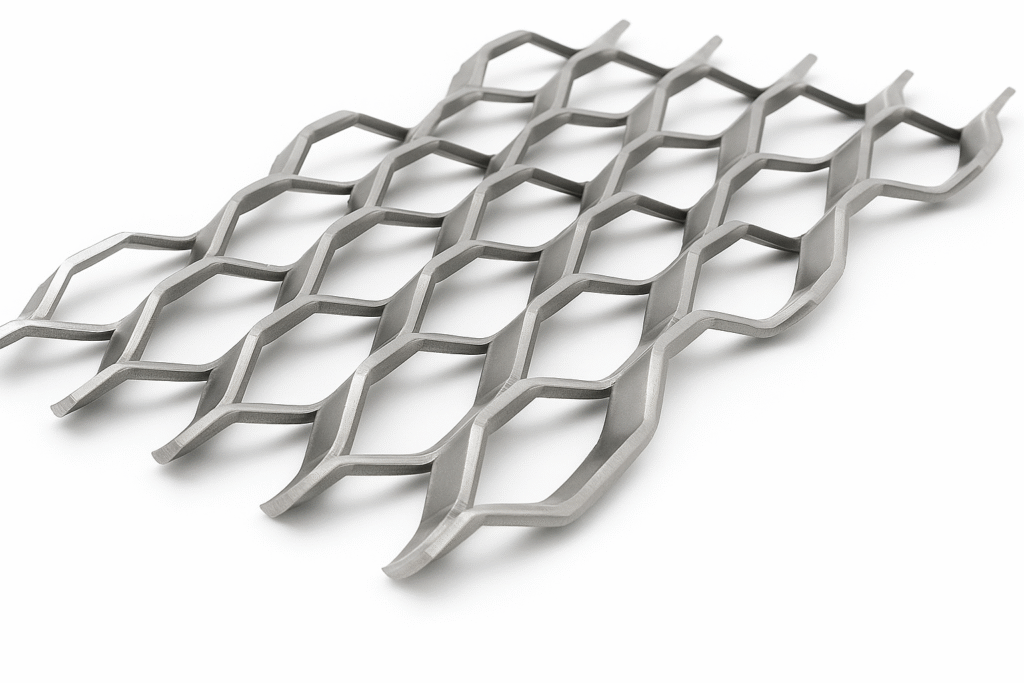









When it comes to soil sieving, wire mesh is always the way to go.
Whether you’re a professional landscaper or just a hobby gardener, using wire mesh is an easy and cost-effective way to quickly and accurately separate out your soil particles.
Let’s take a deep dive into this popular use for our mesh…
Wire mesh is made up of thin wires that are woven together in a pattern. It’s commonly used for filtering out larger particles from smaller ones, such as sieving soil.
As with all filtration the size of the holes in the mesh material determine which sizes of particles will be filtered out. See our recent article on filtration mesh.
Wire mesh works by trapping particles that are too large to pass through its holes. The size of these holes can vary depending on what type of soil you’re trying to sieve, but generally speaking we advise that the apertures should be no larger than 1mm in diameter. This allows you to separate out larger chunks of dirt and other debris while allowing useful materials like compost and mulch to fall through the mesh into a container below. You can also use different types of wire meshes for different types of soils if needed; for example, if you have very sandy or coarse soil then you may want to use a finer-gauge wire mesh with smaller holes.
Perforated metal would also work well for this purpose.

Using wire mesh for sieving soil provides several benefits over traditional methods such as hand-sifting or using screens made from wood or plastic.
The main benefit is that it’s much faster than hand-sifting since all you need to do is pour the dirt into the top of the wire mesh and let it drop down into a container below; this saves time and energy compared to manually picking out larger chunks with your hands or shaking them off a screen one by one. Additionally, since most wire mesh materials come in standard sizes it makes replacing them much easier than having to make custom screens every time they wear out or get damaged.
For stainless steel we suggest a 3 mesh with a 1.6mm wire. This gives a 6.87mm hole.
A 6.87mm hole size is considered a medium-sized mesh, which is suitable for removing larger debris from soil while allowing smaller particles to pass through. Make sure the mesh is securely fastened to a frame or sieve to prevent it from tearing or coming loose during use.


For plain steel we suggest a 4 mesh with a 0.9mm wire. This gives a 5mm hole.
This is also a medium size hole.
If you need something larger then please try this mesh with a 11.1mm hole.
Making a sieve for soil using woven wire mesh can be a simple and affordable DIY project. Here’s how to do it:
Materials:
Instructions:
Measure and cut the wire mesh to fit the size of the frame or hoop. Cut the mesh with wire cutters, being careful not to damage the wire or hurt yourself.
If using a frame, attach the mesh to the frame using screws or clips. Make sure the mesh is taut and securely fastened to the frame.
If using a hoop, wrap the mesh around the hoop and staple or glue it in place. Make sure the mesh is evenly distributed around the hoop and securely fastened.
Trim any excess mesh with wire cutters or pliers to create a smooth edge.
Test the sieve by filling it with soil and gently shaking or tapping it to allow the finer particles to pass through. If the mesh is too fine or too coarse, adjust the hole size or choose a different type of mesh.
After use, clean the mesh thoroughly with water and a soft brush to remove any remaining soil or debris. Store the sieve in a dry place to prevent rust or corrosion.

Wire mesh is an excellent choice when it comes to sieving soil quickly and accurately—no matter whether you’re a professional landscaper or just someone looking for an easy way to improve your garden’s quality without spending too much time on the task itself.
As always, thank you for checking out our blog. We hope that this helps you with your project. We try to launch a couple of new guides every week. Eventually we will have covered everything there is to cover about mesh.
Our goal for our blogs and help guides is to answer as many questions as possible to help to explain the possibilities of mesh to our customers. Contact our team today if you have any questions at all. We are always really keen to help in any way that we can.









